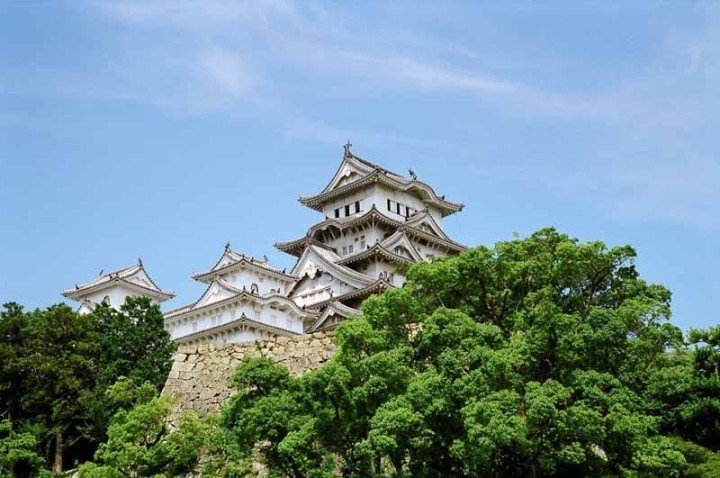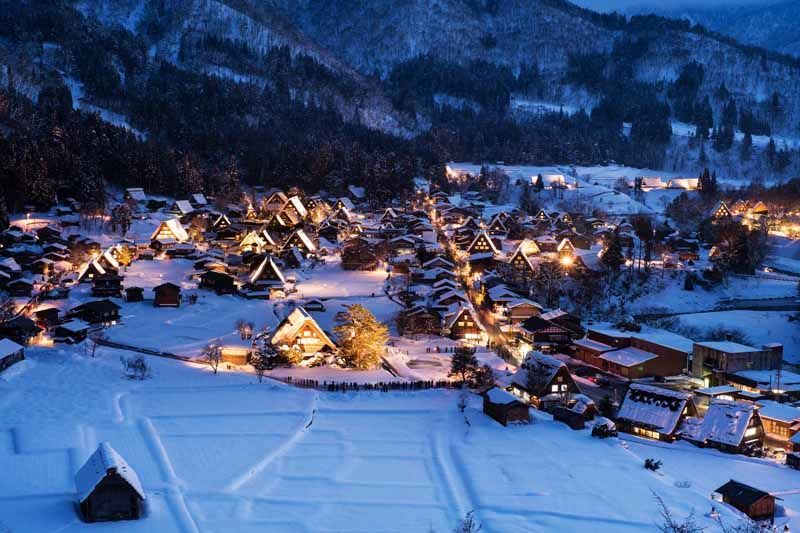Like this post? Help us by sharing it!
What do the Great Pyramids, the Serengeti, a Japanese silver mine and the Fray Bentos meat-packing plant have in common? No, this isn’t the set-up for a terrible joke — they’re all World Heritage Sites.
That’s right — according to UNESCO, these are places of universal value to humankind; so special that they belong to all the peoples of the world, not just their country of origin. Bet you didn’t know you had part-ownership in a pie factory, did you?
In the 20 years we’ve been visiting Japan, its clutch of World Heritage Sites has more than doubled, and by the time you read this it may have increased again. At the time of writing, Japan has 23 World Heritage Sites (four natural and 19 cultural), spanning the length and breadth of the country, and running the gamut from war-era remnants to spectacular national parks.
In part one of this blog, we’ll take you through Japan’s first eleven sites; in part two, we’ll complete the list…
1. Horyu-ji
Inscribed: 1993
The first of Japan’s World Heritage Sites, the Horyu-ji area in Nara Prefecture incorporates 48 different Buddhist monuments. It’s named after Horyu-ji Temple, which is one of the oldest wooden buildings left standing in the world today. It’s thought that the original temple was built in 607 AD, with the current construction dating from around 711.

2. Shirakami-Sanchi
Inscribed: 1993
Most people think of Japan as a place of uninterrupted urban development, but the reality is far from it. Recognised in the same year as Horyu-ji, the Shirakami-Sanchi National Park is located in the mountains of northern Honshu Island and represents the last vestiges of the pristine, primeval beech forests that once covered the entirety of northern Japan. Today the park covers 169.71 square kilometres of unspoilt, mountainous terrain, and harbours an outstanding diversity of wildlife.

3. Himeji Castle
Inscribed: 1993
Himeji is the largest and best-preserved of Japan’s 12 remaining feudal castles — you might recognise it as the ninja training HQ in You Only Live Twice. First built in 1333, it has undergone numerous remodellings and refurbishments over the centuries. The current structure was built in 1609, and has weathered 400 years of battles, earthquakes, fires, and even heavy bombing during WWII.

4. Yakushima
Inscribed: 1993
An island 200 kilometres (125 mi) from the city of Kagoshima in Japan’s southwest, the landscape of Yakushima is more reminiscent of central African jungle or the rainforests of South America than of Japan (or at least the Japan most of us imagine). Mountainous and thickly forested, it has spectacular waterfalls, some of the world’s oldest trees, and more deer and monkeys than people. It’s not hard to see why its atmospheric scenery inspired Hayao Miyazaki’s animated masterpiece, Princess Mononoke.


5. Kyoto
Inscribed: 1994
No list of Japanese World Heritage Sites could be complete without mentioning Kyoto, a city so packed full of culture and history that it was considered too important to bomb during World War Two. Today, Japan’s ancient capital is home to 17 separate World Heritage assets (inscribed together as the Historic Monuments of Ancient Kyoto), including the Golden Pavilion, Kiyomizu Temple, the Phoenix Hall at Uji, Nijo Castle, Ryoan-ji Temple, and many more.


6. Shirakawa-go & Gokayama
Inscribed: 1995
The mountain villages of Shirakawa-go and Gokayama preserve the folk culture of Japan’s alpine communities. Here, you can spend the night at one of the area’s preserved gassho-zukuri – or “praying hands” – farmhouses, named for their steeply pitched, thatched roofs, which were developed to cope with the region’s high level of snowfall. Spending a night in one of these houses, eating local food around an irori hearth, is a magical experience.

7. Hiroshima Peace Memorial
Inscribed: 1996
Hiroshima’s Peace Memorial (also called the Genbaku Dome) represents a rather different kind of heritage from the other sites on this list – but one no less worth preserving and remembering. It commemorates the world’s first atomic bomb, which was dropped on Hiroshima in 1945, killing 70-80,000 people, or 30% of the city’s population. The dome was the only building left standing in the area, and has been preserved exactly as it was found since 1945.

8. Itsukushima Shinto Shrine
Inscribed: 1996
Located on beautiful Miyajima Island, just ten minutes’ boat ride across the bay from Hiroshima, Itsukushima is a Shinto shrine recognised for its bright vermillion buildings and beautiful natural surroundings. The view of the shrine’s torii gate, which appears to “float” out in the bay, is one of the most iconic in Japan. We recommend spending a night at one of the island’s peaceful ryokan inns, surrounded by friendly deer and quiet streets, for a contrast to bustling Hiroshima.

9. Nara
Inscribed: 1998
Just 15 minutes on the train from the great city of Kyoto is Nara, which was itself capital of Japan from 710 until 784 AD. Now primarily known for its over-friendly population of sacred deer, the small city is home to a collection of impressive World Heritage monuments – including the largest wooden building in the world (Todai-ji Temple), which houses the largest bronze Buddha in the world. Often billed as “little Kyoto” for its wood-panelled streets and wealth of temples, it’s a lovely place to see traditional Japan without the crowds.


10. Nikko
Inscribed: 1999
Hidden in the forests of Nikko National Park, just north of Tokyo, Nikko is home to Japan’s most elaborate religious architecture. Amongst Buddhist temples and Shinto shrines, visitors will find the famous “see no evil, hear no evil, speak no evil” monkey carvings – and the tomb of Tokugawa Ieyasu, Japan’s most important shogun.


11. Okinawa’s Ryukyu castles
Inscribed: 2000
Japan’s southernmost prefecture, Okinawa, was once a proud, independent country known as the Ryukyu Kingdom. Having been subjected to a brutal history of Japanese conquest, bloody battles and subsequent American occupation, all that remains of the once-great trading nation are the ruins of its castles – or gusuku, as they are called in Okinawan dialect. Inscribed in the year 2000, they offer the last window on a vanished world.

InsideJapan Tours’ World Heritage Self-Guided Adventure takes in our favourite locations from the World Heritage list, but we can design a trip to incorporate any (or all!) of the destinations inscribed by UNESCO. Just get in touch!


